Guitar World Verdict
A rather good Les Paul for the working musician. Yes, it’s more expensive than the outgoing Studio, but a shade under £2k for the real thing ain’t bad in our book.
Pros
- +
Valid refresh of long-running model.
- +
Proper satin finish.
- +
Good weight.
- +
New Modern features like ebony ’board and contoured heel.
- +
Expansive sounds with pull-switch functions.
Cons
- -
A few fret ends were a little sharp but very little to worry about here.
You can trust Guitar World
The Les Paul Studio was introduced way back in 1983 and although Gibson missed a significant 40th anniversary last year, it always illustrated the desire for a simplified spec ’Paul at a more affordable price.
It’s no different today, and while the lowest-cost slot in the Modern strand of Gibson’s USA line-up has now been taken by the Modern Lite – which just launched and is really a pretty different Les Paul – the new Modern Studio slots in above that, remaining significantly lower in price than the Les Paul Modern.
With so many Les Paul models to manage across the Modern and more vintage-aimed Original Collections, each one needs its own USP.
The Modern Studio does share many features with its more expensive brethren and yet it still has its own style. It is, for example, the lowest-cost Les Paul to feature Gibson’s pull-push electronics with the Quick Connect pickups.
The Modern Studio also swaps the previous iteration’s gloss finish to a four-colour satin choice, without edge binding.
But while ‘satin’ and ‘matt’ seem to refer to anything that’s not glossy, unlike the more rudimentary satin of the Modern Lite, the satin here is beautifully silky smooth over the maple top – some might call it a low gloss – and it’s only slightly more textured on the back, sides and a little more open-pore on the neck back.
In our book, this is a proper satin. Our Red Wine Satin is translucent, too, and we have what appears to be a two-piece centre-joined back, a centre-joined plain maple top and one-piece neck. Also, the top colour seems slightly darker than the sides and back, and means the edge of the maple top is more noticeable, almost like a semi-faux binding.
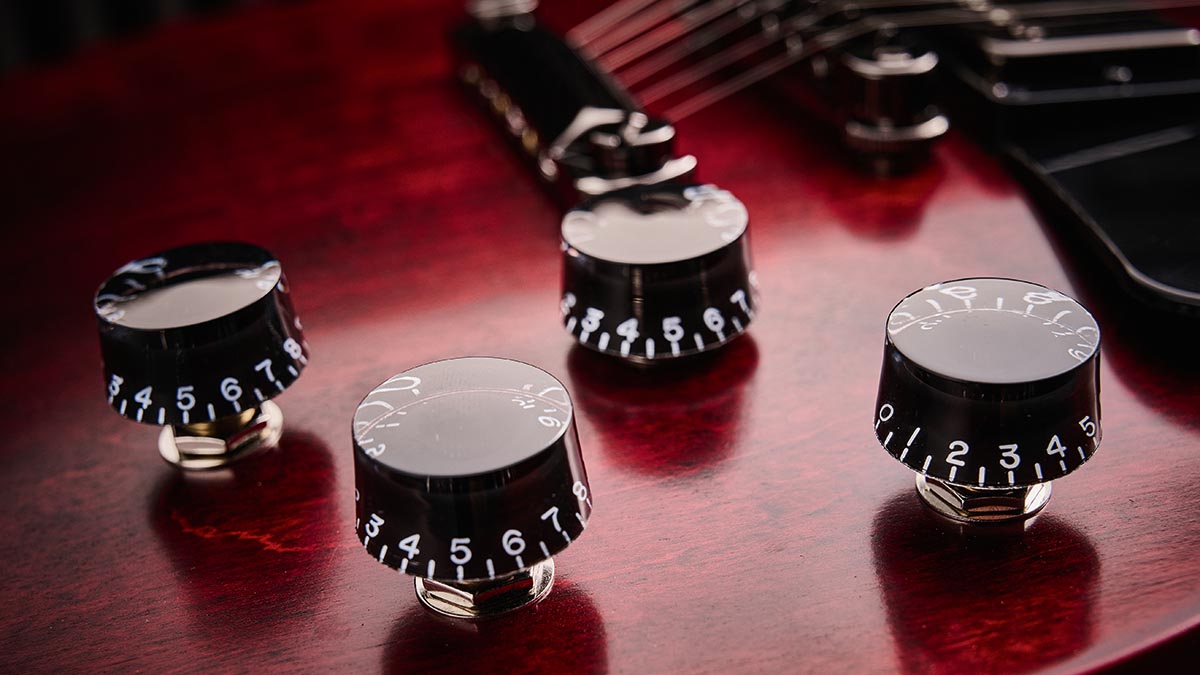
As on the Modern, Modern Figured and Supreme models we have the Ultra-Modern weight relief, and the ebony fingerboard ties in with the new-Modern style and replaces the rosewood of that outgoing Studio, bound with a black plastic (rather than contrasting cream plastic).
It also features the unspecified compound radius of the upmarket Moderns – which we measured at 241mm to 305mm (9.5 to 12 inches) – but not the Modern Lite, or indeed the Les Paul Classic, which both retain Gibson’s standard 305mm (12-inch) camber.
While the Nashville bridge, lightweight aluminium tailpiece and (non-locking) Grover Rotomatic tuners are standard Gibson fare, here they come in a rather fitting, modern-looking black nickel plating. The pickups and controls remain the same as on the previous Studio.
Feel & Sounds
With respect to the lightweight and 45mm-thick Modern Lite, the Modern Studio feels like a proper Les Paul.
As per the Studio recipe, it’s slightly thinner in overall depth at 57mm and measures 46mm at the rim, compared with the full-fat 62mm/50mm dimensions of the Les Paul Modern Figured.
With that weight relief, we have a very manageable guitar that weighs in at 3.81kg (8.38lbs). The lack of contrasting edge binding and the satin finish does project a bit of a cut-price vibe, but to our eyes it’s noticeably classier than the Modern Lite.
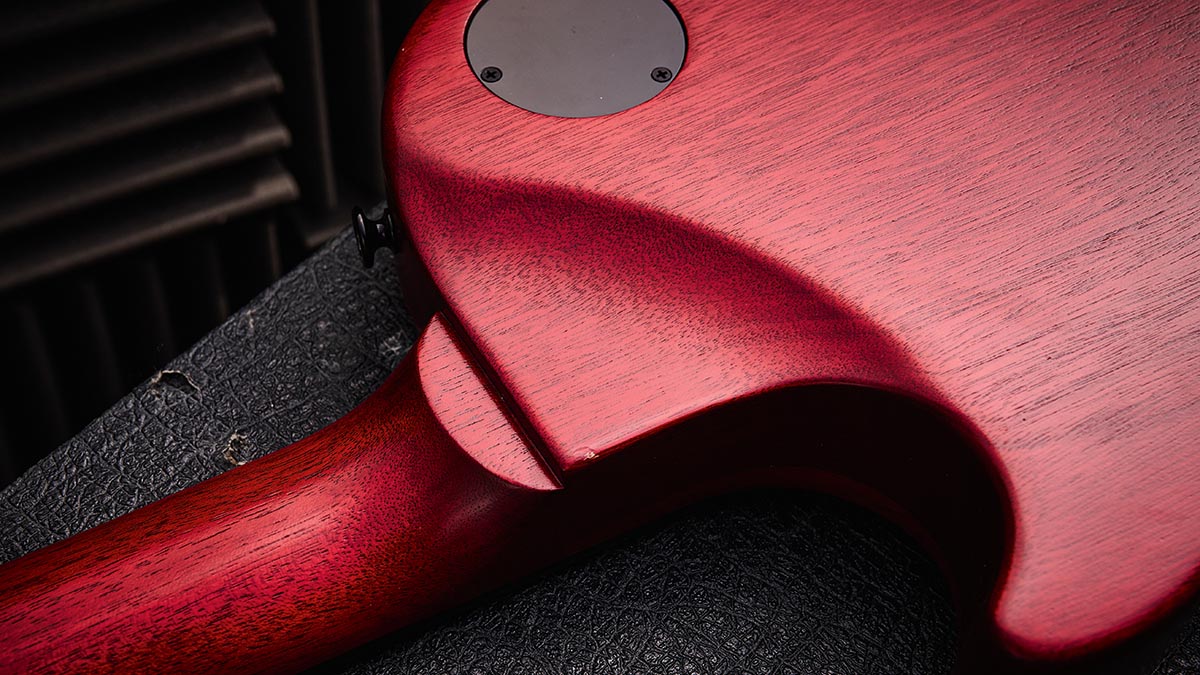
Adding to the familiarity is the SlimTaper 60s-style neck profile that sits nicely between thick and thin, here with a nut width of 43.4mm, and 20.5mm at the 1st fret and 23mm at the 12th, with a pretty mainstream-feeling shallow C profile.
Another change is the reduced-depth contoured heel that subtly improves upper-fret comfort. You might have to look twice before you notice the black fingerboard edge binding, but in contrast to the vintage style, the fret ends sit over the binding, with the tangs notched and hidden by the black plastic strip.
There’s a little edge rolling but also a slight ‘edge’ where the finish stops and the binding starts. Overall, though, while we might prefer slightly more fret-end rounding, as supplied it was nicely set up with only very slight relief and a pretty low ‘fast’ action. Of course, gurning blues-benders might need a bit more air to the setup, but that’s easily achieved.
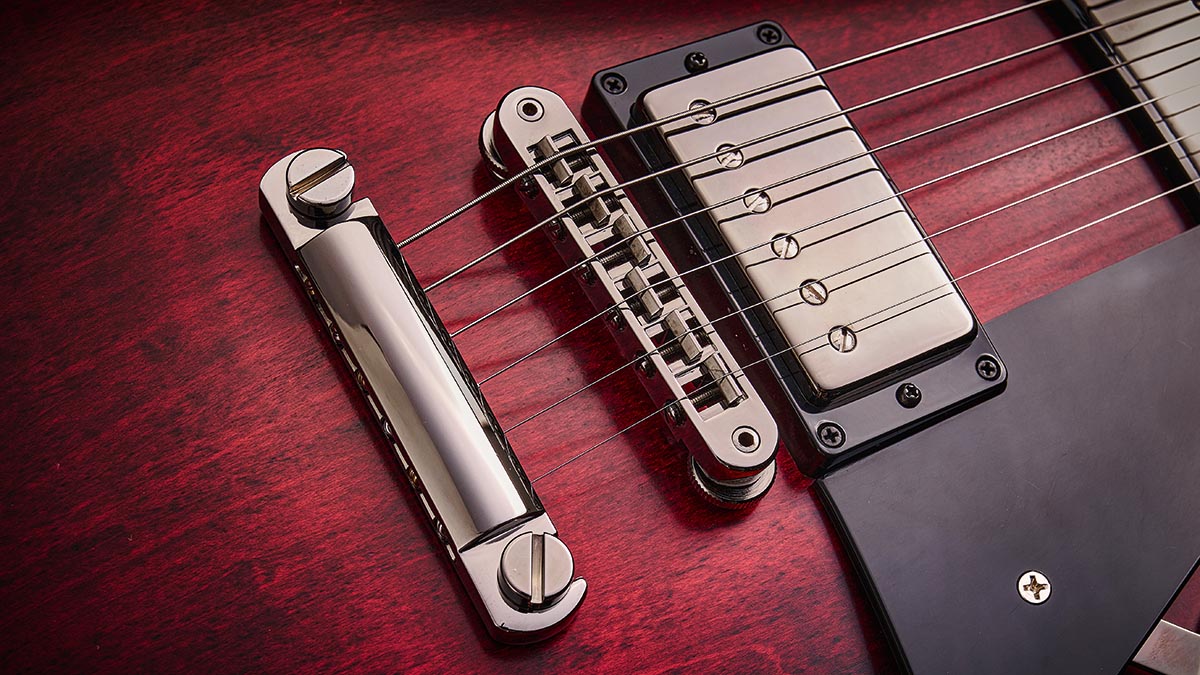
The Modern Studio uses the same pickups as the Modern Lite – though these are covered – and while the Modern Lite has traditional wiring, the Studio sticks with the four pull-push pots, meaning we have the capacitor-filtered ‘coil taps’ for each pickup on their respective volume controls. When pulled up the neck’s tone puts the pickups out of phase, while pulling up the bridge pickup’s tone sends the bridge pickup direct to output.
Overall, this Modern Studio has a lot going for it. It’s lighter in weight than our reference Les Paul Classic and the combination of the subtle depth reduction, not to mention the different weight relief, all seem to work in its favour.
And whether or not that thin finish is helping the sounds we hear (we have no science to back that up!), there’s a juicy warmth to the overall voice that sounds played in, if there is such a thing.
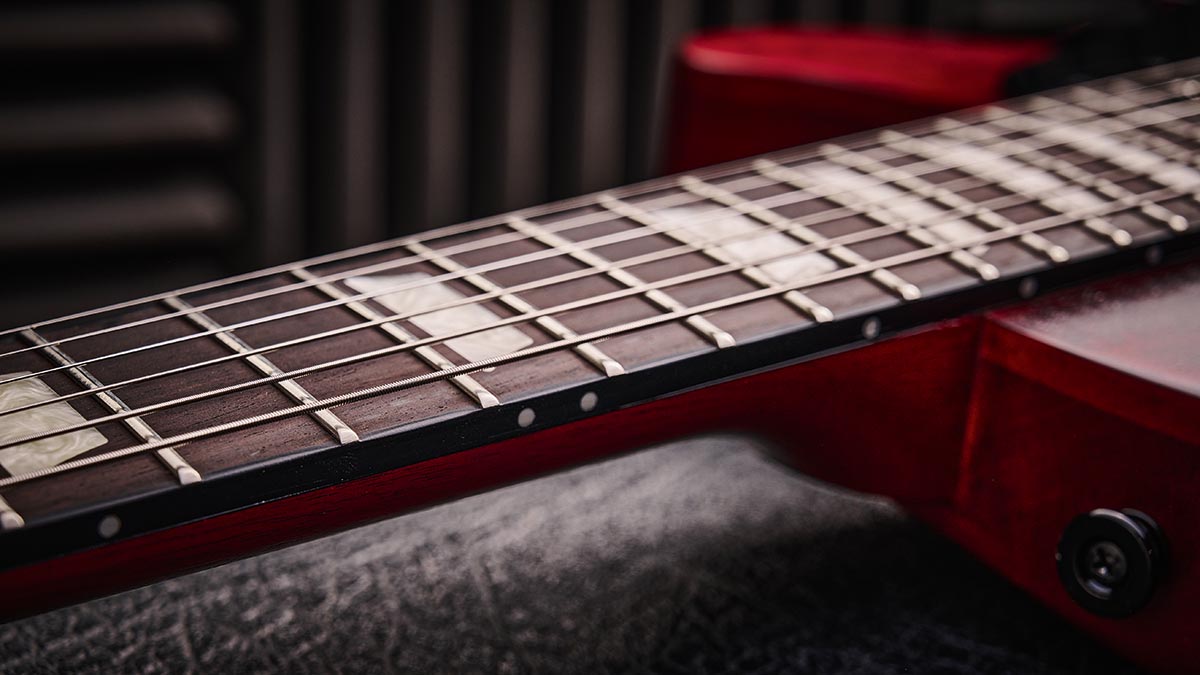
Those ‘coil taps’ are relatively subtle, just scooping a little of the upper midrange snap and slightly softening the high-end.
With some crunchy gain, for example, it’s almost like you’ve pulled back a wah pedal slightly and pulled down the resonant peak a little. It means in combination with the two volumes there’s plenty of shading out of phase beyond the thin and hollow; some real character emerges with the taps in play and volume adjustment.
As ever, the direct output switch emphasises the sizzle of the bridge with a slight uplift in output. Swapping between various other single-cuts, the Studio doesn’t feel deficient in any way – it’s a really good resonant ride, nicely balanced between thick and creamy, and bright and clear.
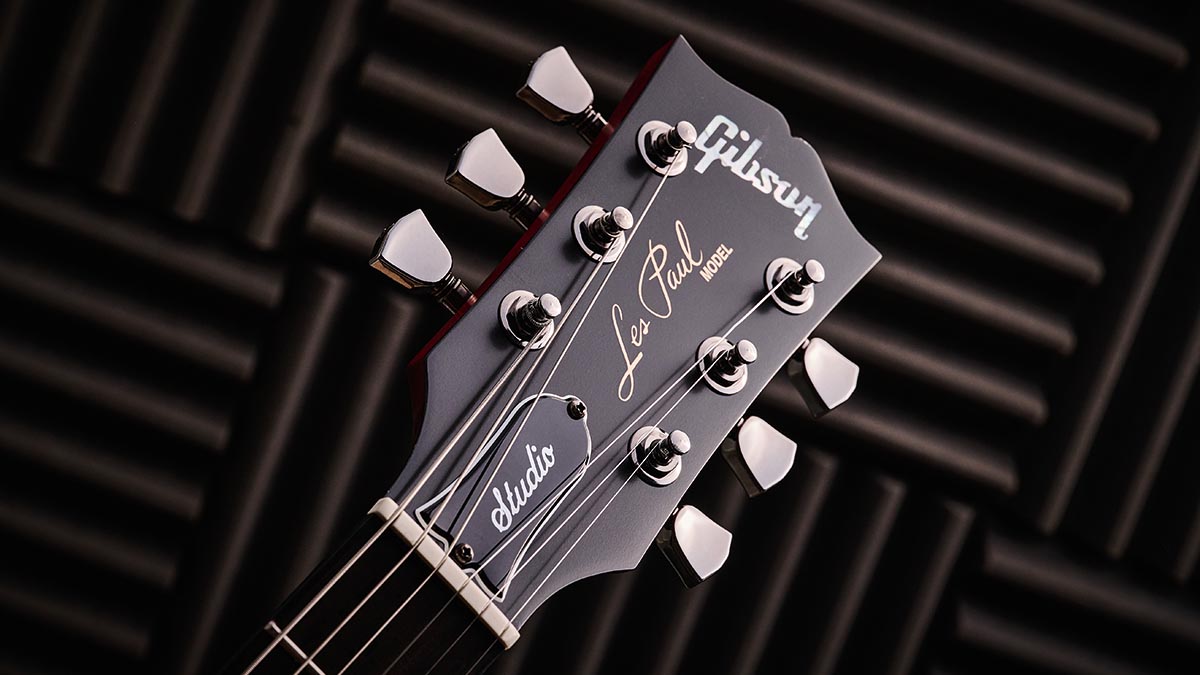
Verdict
Gibson calls this new Studio model a “no-nonsense, high-performance tone machine”, and we can’t disagree. With the lighter weight soft-shell guitar case, it’s a shoo-in for any gigging musician, not least with its non-precious satin finish that will begin to wear after a few gigs. And while its electrics haven’t been upgraded on this new version, you can’t help thinking, well, if it ain’t broke…
Here’s a ’Paul that’s more Slash than Peter Green... you don’t have to use those extra sounds, but they’re there if you need them
Here’s a ’Paul that’s more Slash than Peter Green, but don’t forget Gibson’s Pickup Shop is about to offer Quick Connect pickups (initially, the ’57 Classics and Dirty Fingers), so revoicing the guitar, while retaining those extra sounds from the pull-push pots, is a simple no-solder process.
As we’ve said before, you don’t have to use those extra sounds, but they’re there if you need them: a slightly different flavour from the ‘coil taps’, out-of-phase, or that direct out ‘solo’ switch. A nice array of ‘secret’ weapons.
It’s tidily done, too, and is a rather good Les Paul for the working musician. Yes, it’s more expensive than the outgoing Studio, but a shade under £2k for the real thing ain’t bad in our book.
Specs

- PRICE: $/£1,999 (inc soft case)
- ORIGIN: USA
- TYPE: Single-cutaway, solidbody electric
- BODY: 2-piece mahogany with carved maple top and Ultra Modern weight relief
- NECK: 1-piece mahogany, SlimTaper profile with contoured heel, glued-in
- SCALE LENGTH: 624mm (24.6”)
- NUT/WIDTH: Graph Tech/43.4mm
- FINGERBOARD: Black bound ebony, acrylic trapezoid inlays, measured 241-305mm (9.5-12”) compound radius
- FRETS: 22, medium jumbo
- HARDWARE: Nashville tune-o-matic bridge, aluminium stopbar tailpiece, Grover Rotomatic w/ keystone buttons – black nickel-plated
- STRING SPACING, BRIDGE: 51.5mm
- ELECTRICS: Covered Gibson 490R (neck) and 498T (bridge), 3-way toggle pickup selector switch, volume and tone for each pickup each with pull-switches for coil-tap, phase and bypass
- WEIGHT (kg/lb): 3.85/8.47
- OPTIONS: None
- LEFT-HANDERS: Not this model
- FINISHES: Wine Red Satin (as reviewed), Worn White, Smokehouse Satin, Manhattan Midnight satin (£1,899) – satin nitrocellulose
- CONTACT: Gibson

Dave Burrluck is one of the world’s most experienced guitar journalists, who started writing back in the '80s for International Musician and Recording World, co-founded The Guitar Magazine and has been the Gear Reviews Editor of Guitarist magazine for the past two decades. Along the way, Dave has been the sole author of The PRS Guitar Book and The Player's Guide to Guitar Maintenance as well as contributing to numerous other books on the electric guitar. Dave is an active gigging and recording musician and still finds time to make, repair and mod guitars, not least for Guitarist’s The Mod Squad.
“I was in a frenzy about it being trapped and burnt up. I knew I'd never be able to replace it”: After being pulled from the wreckage of a car crash, John Sykes ran back to his burning vehicle to save his beloved '76 Les Paul
“It holds its own purely as a playable guitar. It’s really cool for the traveling musician – you can bring it on a flight and it fits beneath the seat”: Why Steve Stevens put his name to a foldable guitar
“A virtuoso beyond virtuosos”: Matteo Mancuso has become one of the hottest guitar talents on the planet – now he’s finally announced his first headline US tour












